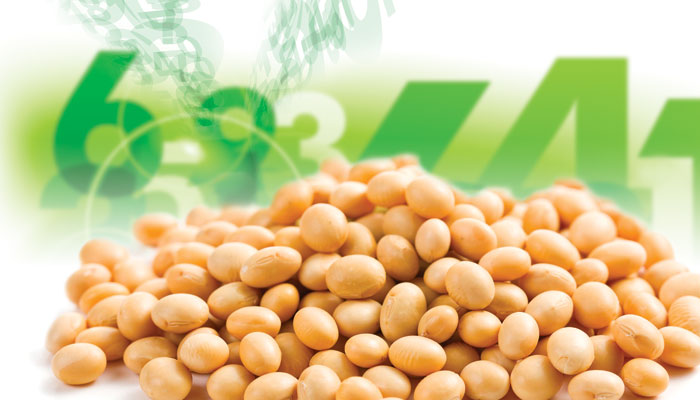All
Creating Confidence in RINs
by John MacKenna

The marketplace for federal energy credits known as RINs (Renewable Identification Numbers) is becoming more transparent and reliable with the development of a new auditing system designed to reduce RIN fraud.
Oil & Energy recently reached out to EcoEngineers, of Des Moines, Iowa, to discuss RIN verification, which is vitally important to fuel marketers who accept RINs when buying renewable fuel, such as biodiesel or ethanol. EcoEngineers Chief Operations Officer Karyn Jones spoke with us at length about the RINs marketplace and EcoEngineers’ auditing services for biodiesel producers.
RFS Monitoring
RINs are energy credits developed by the U.S. Environmental Protection Agency (EPA) to monitor compliance with the Renewable Fuel Standard (RFS), which was created by the Energy Policy Act of 2005. RINs are generated by biofuel producers and correspond to each qualifying batch of biofuel that is produced in the United States or imported. They carry monetary value, because petroleum refiners ultimately need to own them and “retire” them with EPA to comply with their obligations under RFS, which is now in its second phase, known as RFS2. “The RFS, through the RIN program, places the economic burden of building renewable fuel production and distribution infrastructure on petroleum refiners who have to buy the RINs,” Jones explained.
RINs generally move through the marketplace with the associated gallons of biofuel, with the buyer paying for the renewable fuel and all or some of the perceived value of the RIN. The RIN can only be monetized after it is separated from the fuel and sold separately. Fuel marketers who purchase biodiesel for blending will often buy the RINs as well, making them participants in the RINs marketplace. Marketers can avoid RINs by buying only blended fuel or refusing to accept RINs, but they will have a smaller pool of sellers from which to choose. Marketers are not “obligated parties” under RFS2, but they still must register in the EPA Moderated Tracking System (EMTS) to participate in RINs transactions. “The only obligated parties are producers and importers of non-renewable or fossil fuel,” Jones noted.
RINs can only be separated when the biofuel is blended with diesel fuel or used in a neat form. Producers of the fuel are prohibited from separating the RINs unless they can blend the fuel or sell it directly to an end user who will use it in its neat form. Therefore, heating oil distributors must often take title to the RINs, and it becomes a question of comparing the administrative cost of staying compliant with RFS (registration and quarterly reporting) with the benefits of participating in the RIN program and selling biofuel.
RINs have no direct relationship to the Biodiesel Blenders Tax Credit (BTC), which is an Internal Revenue Service program to incentivize biodiesel production. The Blenders Credit had been $1/gallon until it lapsed at the end of 2013. Congress has reinstated the tax credit retroactively in the past and could do so again for 2014, but there is no clear indication whether the credit will be restored this year. Jones said the BTC and state incentive programs have played a major role in increasing biodiesel production and new project development in the United States.
Promoting Transparency
The RINs market is complex, and there have been instances of fraud that have proven costly to participants and cast a shadow of doubt on the marketplace. “A lot of RIN fraud was uncovered in 2011-2012, and it became apparent that additional due diligence was required to see if RINs were valid,” said Jones. In one egregious example, Maryland-based Clean Green Fuel LLC allegedly created RINs without ever producing the corresponding fuel. EPA’s remedy was to recover first from the producer and then pursue the refiner who ultimately bought the RINs. In addition to explicit fraud, there were numerous cases of administrative errors in RIN generation and reporting at genuine production facilities that made good fuel but had invalid RINs in their inventory.
“When the fraud came out in 2011 and the obligated parties had retired the fraudulent RINS, EPA went after the producers first and then after the obligated parties that had retired the RINs,” Jones said. “They issued Notices of Violations (NOV) to the obligated parties and required them to replace all the fraudulent RINs they had used. Getting an NOV is a big deal, and that is millions of dollars that they had to spend to replace the RINs that they did not know were fraudulent. The refiners took a big step back and said they were not going to buy RINs if they did not know where they came from, because it was a big risk.”
To promote transparency and trust in the RIN marketplace, EcoEngineers launched an auditing program for producers in 2012. “We called it the EcoEngineers Quality Assurance Program or QAP,” Jones explained. “Our first clients were small to medium producers who were having a hard time selling RINs because they are not large and are unknown to the obligated parties. As a third party, we came in and looked at the activity and did an audit and determined whether the RINs were valid.”
In 2013, EPA came out with its own proposed guidelines for running quality assurance on RINs. “We submitted details about our protocol to EPA, and it was approved, and we have been operating under pre-approved guidelines,” Jones said. The rulemaking that includes the EPA’s Quality Assurance Plan programs is expected to be finalized in 2014, according to EPA.
“EPA expects the program to promote greater liquidity in the transfer and use of RINs, especially for smaller producers, helping to make the RFS program more efficient and effective,” EPA writes on its website.
QA Options
EPA’s proposed QAP program is voluntary and has two versions, QAP A and QAP B. Both versions offer Obligated Parties a waiver of civil liabilities; i.e., they will not receive any NOVs and civil penalties if any QAP RINs they purchase end up being fraudulent. Producers can choose the more stringent version, QAP A, to provide maximum assurance for buyers, according to Jones. It involves ongoing monitoring for many components, while QAP B provides quarterly monitoring. Under the proposed rules, QAP A places a quality assurance provider such as EcoEngineers is in harm’s way, because EPA is entitled to recover damages from them if they cannot recover from the producer they audited, she noted.
“With the level of monitoring that a producer undergoes, we have a high degree of confidence,” she said. “We are willing to put our hat in the ring. We have a great track record with our producers.”
Under QAP B, the EPA is entitled to recover from the obligated party if they can’t recover from the producer, and there is a cap on replacement obligation for 2013-2014 QAP B RINs. Coupled with the waiver of civil liabilities, this is a great incentive for obligated parties to purchase QAP B RINs over non-QAP RINs, according to Jones.
Shelter for Obligated Parties
Under the new rules as proposed, EPA will not issue NOVs to obligated parties that buy RINs from producers that are in QAP A or QAP B – a welcome change for refiners, according to Jones. “We have seen a lot of clients sign up for it since the EPA came up with this. We also see a lot of interest from obligated parties in knowing where the RINs originated.”
EcoEngineers also helps producers register their RINs automatically through an electronic system and consults clients on production practices and waste-to-energy solutions. They also assist with report preparation and engineering reviews. “We find that the producers just want to make fuels and not worry about navigating all these compliance requirements,” she said.
With its range of services, the company helps biodiesel producers build trust in the marketplace, according to Jones. Auditing is voluntary, and producers who undergo audits have an advantage in the marketability of their RINs, because a third party is reviewing their operations.
“The problem we are getting into now is transparency about who’s QAP and who’s not,” she said. That’s because as long as the QAP is in the proposed rulemaking phase, the EPA’s electronic system for RIN generation and tracking (EMTS) does not distinguish between QAP RINs and non-QAP RINs. “The only way for the obligated party to know is to ask the QAP provider.” EcoEngineers regularly publishes a list of the producers it audits, Jones said.
Once the latest rulemaking for RFS2 is finalized and the transition is complete, EMTS will include the producer’s audit status. “At the point of RIN generation, the RIN will be tagged as QAP, and from then on it’s traded as QAP,” she said. It will be clearer who is in [a QAP program] and who is not.” She expects the system to be effective at indicating which producers might be fraudulent.
While marketers are not obligated parties under RFS2, Jones said it is important for them to understand RINs compliance issues so they do not inadvertently fall out of compliance with regulations affecting RINs trading. She recommends that marketers check both the quality of the biodiesel they buy and the validity of the RINs. “Inquire whether the seller has been audited,” she recommended.
With the marketplace for biodiesel and other bio-oils still in its early stages, it is worthwhile to spend some time studying the rules and understanding the opportunities and costs associated with new regulations. Bioheat® could be an innovative branding strategy to separate oneself in the marketplace. It will be even better if it pays for itself through profits from the RIN program, according to Jones.
Related Posts
 Care and Treatment of Biodiesel Blends
Care and Treatment of Biodiesel Blends
Posted on December 18, 2025
 EIA Winter Fuels Outlook
EIA Winter Fuels Outlook
Posted on December 18, 2025
 How to Set Your Business Apart with Renewable Propane
How to Set Your Business Apart with Renewable Propane
Posted on October 16, 2025
 EIA Report: Biodiesel and Renewable Diesel Imports Fall Sharply
EIA Report: Biodiesel and Renewable Diesel Imports Fall Sharply
Posted on October 16, 2025
Enter your email to receive important news and article updates.
